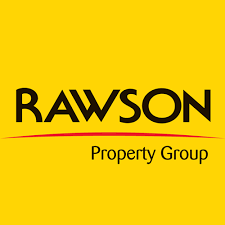Commercial building inspections are more important than you think. They’re not just for new construction projects, either. A commercial building inspection is a key part of making sure that your business continues to operate safely and efficiently day in and day out.
Inspections can establish the baseline functionality of the building’s structure, check for any health and safety violations or uncover potential hazards that could put tenants and building occupants at risk. But perhaps most importantly, an inspection can validate stakeholder decisions about upgrading or repairing specific aspects of the property while helping you to coordinate with contractors to resolve matters efficiently.
So, who conducts commercial building inspections and what will they check for? Let’s take a look.
What is a commercial building inspection?
A commercial building inspection, put simply, is an evaluation of a building or property used for commercial purposes, intended to drive profit from operations or rental income. This includes cafes, retail shops, warehouses, factories, office buildings, residential units (like multi-family or single-family dwellings), restaurants and so on.
The aim of a commercial building inspection is to identify or uncover any issues with the property, be it structural or otherwise. Whilst commercial building inspections should be conducted regularly, they will most commonly be conducted at the start or end of a tenancy or during the buying or selling of the property.
Buying or leasing a commercial property is a huge investment, so these extra steps make sure that the building owner’s investment is secure and that the tenant or purchaser is buying into a property that is fit for purpose, and this is especially true for commercial property investment in post-pandemic.
To that end, the commercial building inspection will reveal the true property condition, including any costs needed for remedial work or ongoing maintenance. Commercial building inspections are necessary during specific stages of the transaction process and throughout the lifecycle of the building, too.
Who conducts a commercial building inspection?
When it comes to the standard commercial building inspections, for legal purposes it must be conducted by a licensed or trained professional. There are many different types of surveyors or building inspectors, coming from a range of backgrounds. They each fulfill varied job functions depending on the type of building or issue they are inspecting. For example, if the building being inspected is a factory, it might require the expertise of an industrial building surveyor or a structural engineer, depending on the nature of the inspection.
Commercial building inspectors might have a background in facilities management, building maintenance, engineering, architecture or any number of trades or jobs related to property or construction. Though it’s worth mentioning that the more specialised the inspector, the more expensive they might be.
However, don’t be dissuaded by less specialised inspectors – it’s quite common for a commercial building inspector to double up as a residential building inspector, or vice versa. In fact, with the current shortage of trained inspectors in the industry, this is becoming even more common. Despite this, these inspectors still possess a wealth of knowledge in the built environment and are more than capable of conducting a professional inspection with the understanding that a commercial property is a different kind of asset to that of a private residence.
What does a commercial building inspection involve?
On the day of the inspection, one of the first things a commercial building inspector will do is walk through the property and take photographs. This will help the inspector document any existing problems, as well as any future changes that may need to be made.
Other steps of a commercial building inspection include a visual inspection of the exterior of the building, a walk-through inspection of the interior, and a review of the documentation associated with the property.
Visual inspections conducted outside will look for cracks and deficiencies in the exterior of the building or any other issues that could be a problem. Walking through the interior of the building may include surveying the condition of internal structures and fittings, fire doors, windows and so on.
Reviewing the documentation associated with the property can include the sales contract, mortgage documents and insurance policies. This is normally undertaken to verify whether or not the building condition and specification is compliant with those documents.
The commercial building inspector will ultimately look to uncover any structural deficiencies, critical issues with any part of the building and safety hazards, among other things. The more a commercial building inspector uncovers during an inspection, the better they can identify any problems that have arisen or will arise in the future. This benefits all involved, including the tenant, as they can ensure that building occupants are safe and secure in a fit for purpose building. Here are some other things a commercial property inspector will look for:
- Landscaping
- Utilities
- Structure
- Building envelope (Including the exterior, basement, attic)
- Roofs
- HVAC equipment
- Plumbing
- Electrical systems
- Stairs
- Fire safety
Some commercial inspections centre on return on investment and asset value, rather than highlighting deficiencies or issues. Inspections carried out to this end will typically look at roofing, plumbing, HVAC and structural integrity. For example, a HVAC system might be performing poorly, yet the building owner or the new purchaser might be able to take the decision to defer any remedial work until later in the asset’s lifespan. Either that, or they would be able to find out when a future fix or maintenance will be needed so they can plan for any eventuality.
What will commercial building inspectors look at?
1. Building Documents
Commercial building inspectors check a number of documents during the inspection. These could include planning applications, construction documentation, environmental studies, fire safety certificates, surveys, or many more.
2. Building Exterior
Looking at the building’s exterior will help the inspector to observe any deficiencies or issues with the structural integrity of the building. This could even include landscaping, roofing or any other part of the building’s exterior.
3. Building Interior
Checking the interior of a property is quite involved, there are many elements to consider, especially in commercial inspections. The inspector might look at hazards, fire safety risks, walls, windows, kitchen facilities, and a range of other interior factors.
4. Building Systems
The major systems in a building are just as important as the structure or the interior. Things like electrical, plumbing and HVAC all need to be inspected. If one fails, the value or safety of a property might fall dramatically.
When to conduct a commercial building inspection
There is no “best time” to conduct a building inspection. Inspections can be conducted any time, any day, all year round. Commercial building inspections aren’t just start and finish points for purchases or leases, they can help building managers maintain the structural integrity or safety of the building throughout its lifecycle.
Commercial building inspections, such as safety inspections or cleaning inspections, can be vital to ensure a building stays in good shape, employees or occupants remain happy and safe and that the asset remains as valuable as possible.
While commercial building inspections may have at one time in the past seemed like an upheaval, they’re actually simple to conduct. With the use of commercial building inspection software, inspections can be conducted in a fraction of the time, with minimal or no disruption to the building occupants.












